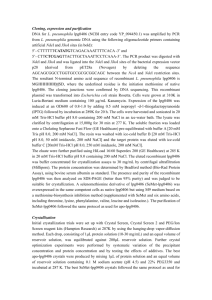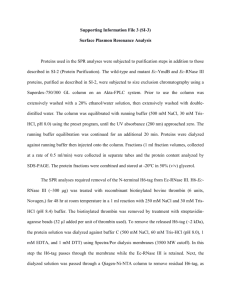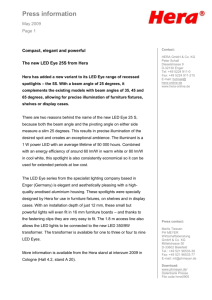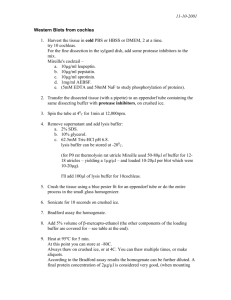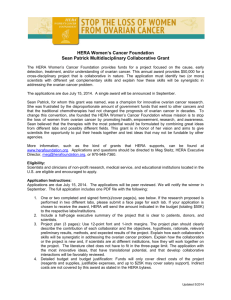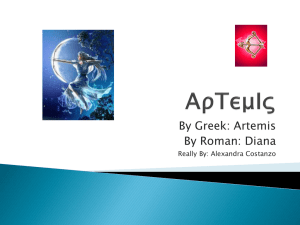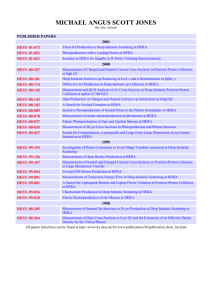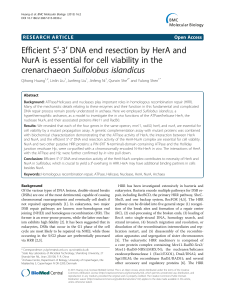file - BioMed Central
advertisement
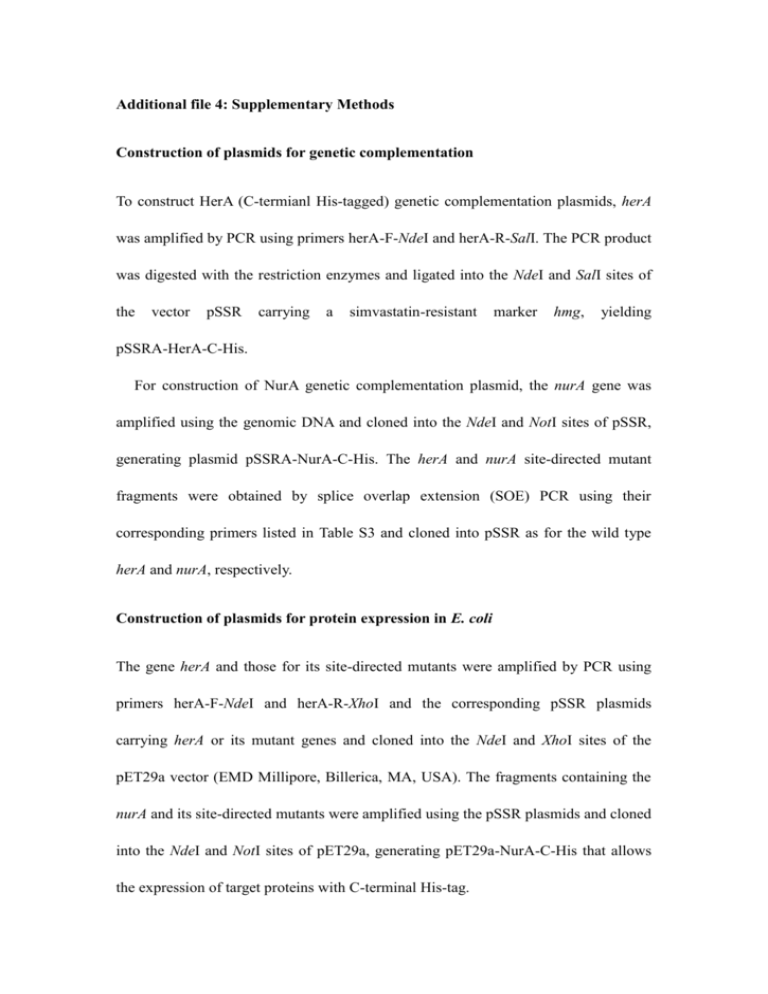
Additional file 4: Supplementary Methods Construction of plasmids for genetic complementation To construct HerA (C-termianl His-tagged) genetic complementation plasmids, herA was amplified by PCR using primers herA-F-NdeI and herA-R-SalI. The PCR product was digested with the restriction enzymes and ligated into the NdeI and SalI sites of the vector pSSR carrying a simvastatin-resistant marker hmg, yielding pSSRA-HerA-C-His. For construction of NurA genetic complementation plasmid, the nurA gene was amplified using the genomic DNA and cloned into the NdeI and NotI sites of pSSR, generating plasmid pSSRA-NurA-C-His. The herA and nurA site-directed mutant fragments were obtained by splice overlap extension (SOE) PCR using their corresponding primers listed in Table S3 and cloned into pSSR as for the wild type herA and nurA, respectively. Construction of plasmids for protein expression in E. coli The gene herA and those for its site-directed mutants were amplified by PCR using primers herA-F-NdeI and herA-R-XhoI and the corresponding pSSR plasmids carrying herA or its mutant genes and cloned into the NdeI and XhoI sites of the pET29a vector (EMD Millipore, Billerica, MA, USA). The fragments containing the nurA and its site-directed mutants were amplified using the pSSR plasmids and cloned into the NdeI and NotI sites of pET29a, generating pET29a-NurA-C-His that allows the expression of target proteins with C-terminal His-tag. Protein purification The pET29a plasmids carrying herA, nurA, or their mutant genes were transformed into E. coli BL21 (DE3)-CodonPlus-RIL for expression. IPTG (Merck, Darmstadt, Germany) was added for induction of proteins when OD600 of cells reached 0.2–0.6. After incubation at 37oC for further 4 hrs, cells were collected, resuspended in buffer A (50 mM Tris-HCl, pH 8.0, and 100 mM NaCl) and disrupted by sonication. Cell extract was heat-treated at 70oC for 30 min. Insoluble material was removed by centrifugation at 11,000 rpm for 15 min. For HerA, the supernatant was filtered with a 0.2-μm Millex-GP filter unit (Millipore, Billerica, MA, USA) and loaded onto a Ni-NTA column that had been pre-equilibrated with buffer A. The column was washed with six volumes of wash buffer (50 mM Tris-HCl, pH 8.0, 100 mM NaCl, and 30–40 mM imidazol). The target proteins were eluted with elute buffer (50 mM Tris-HCl, pH 8.0, 100 mM NaCl, and 250–300 mM imidazol). The eluted proteins were diluted in buffer A and concentrated before purification with a HiTrap Q FF column (GE Healthcare, Buckinghamshire, UK) that had been pre-equilibrated with buffer A. The proteins were eluted with a linear gradient of 0 to 1 M NaCl. The fractions containing target proteins (in 350–500 mM NaCl) were pooled, concentrated, and dialyzed against buffer A. The proteins were subsequently purified by gel filtration using a SuperdexTM 200 10/300 column (GE Health, UK) in buffer A. The purification of NurA is the same as that of HerA except that it was purified by a HiTrapTM Heparin HP column (GE Health, UK) instead of a HiTrap Q FF column after Ni-NTA purification.
